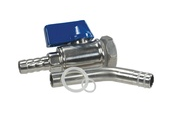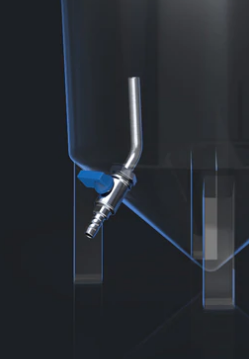agentbud
Well-Known Member
I am thinking about adding a sample valve to my brewtech brewbucket. I hate having to rotate the drain valve up then back down each time I want to take a sample so I figured a dedicated valve further up the side might work better (ie - I wouldn't have to rotate it). When I look at some of the common brew sites and search for "sample valve", it brings up these special valves named exactly that but are anywhere from $40 up to over $100 for just a stinking valve. Is there anything special about these valves vs using just a plain 3/8 ball valve similar to the one shown below to take samples with?





